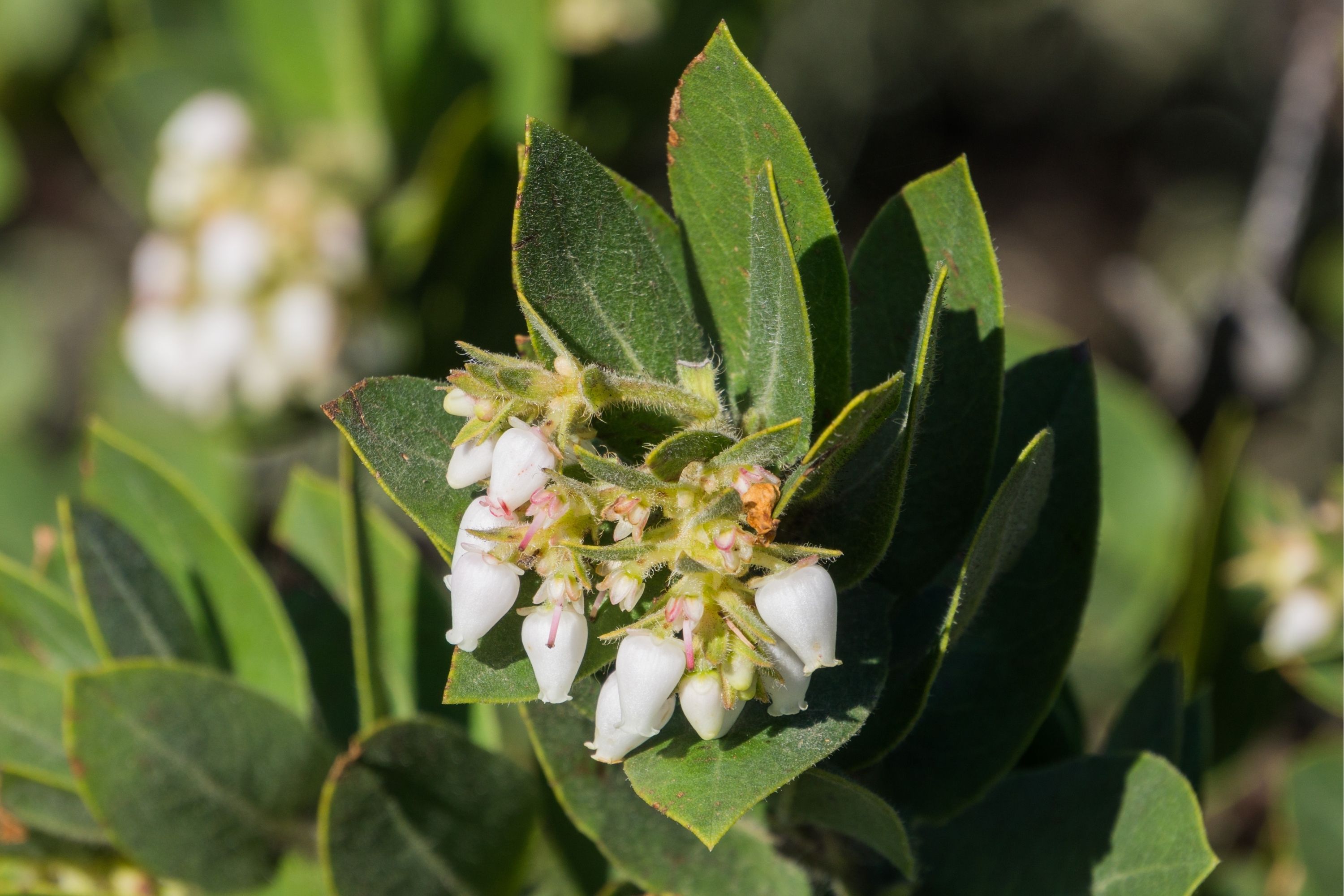Woollyleaf manzanita
(Arctostaphylos tomentosa)

Description
Arctostaphylos tomentosa is a species of manzanita known by the common name woollyleaf manzanita or woolley manzanita. This shrub is endemic to California. It is a resident of chaparral canyons, foothills, and lower-elevation mountains. One specialized habitat in which A. tomentosa is found is the Monterey Cypress forests at Point Lobos and Del Monte Forest in Monterey County, California. This is a low-lying, spreading manzanita, generally quite a bit wider than it is tall. It is a variable species and even some of the subspecies can vary in appearance across individuals. The stems may be red or gray or both, with smooth, rough, or shreddy bark, hairless to quite bristly. The leaves may be oval to lance-shaped and sometimes toothed, but the upper surface is generally darker and shinier than the lower. The flowers are white to pink and may be hairy or hairless inside. The fruits are fuzzy reddish drupes under a centimeter in diameter. Arctostaphylos is a genus of plants comprising the manzanitas and bearberries. They are shrubs or small trees. There are about 60 species, of Arctostaphylos, ranging from ground-hugging arctic, coastal, and mountain species to small trees up to 6 m tall. Most are evergreen (one species deciduous), with small oval leaves 1–7 cm long, arranged spirally on the stems. The flowers are bell-shaped, white or pale pink, and borne in small clusters of 2–20 together; flowering is in the spring. The fruit are small berries, ripening in the summer or autumn. The berries of some species are edible. Arctostaphylos species are used as food plants by the larvae of some Lepidoptera species including Coleophora arctostaphyli (which feeds exclusively on A. uva-ursi) and Coleophora glaucella. Manzanitas, the bulk of Arctostaphylos species, are present in the chaparral biome of western North America, where they occur from southern British Columbia in Canada, Washington to California and New Mexico in the United States, and throughout much of northern and central Mexico. Three species, the bearberries, A. alpina (alpine bearberry), A. rubra (red bearberry) and A. uva-ursi (common bearberry), have adapted to arctic and subarctic climates, and have a circumpolar distribution in northern North America, Asia and Europe. One fossil fruit of †Arctostaphylos globula and several fossil fruits of †Arctostaphylos menzelii have been described from middle Miocene strata of the Fasterholt area near Silkeborg in Central Jutland, Denmark.
Taxonomic tree:







